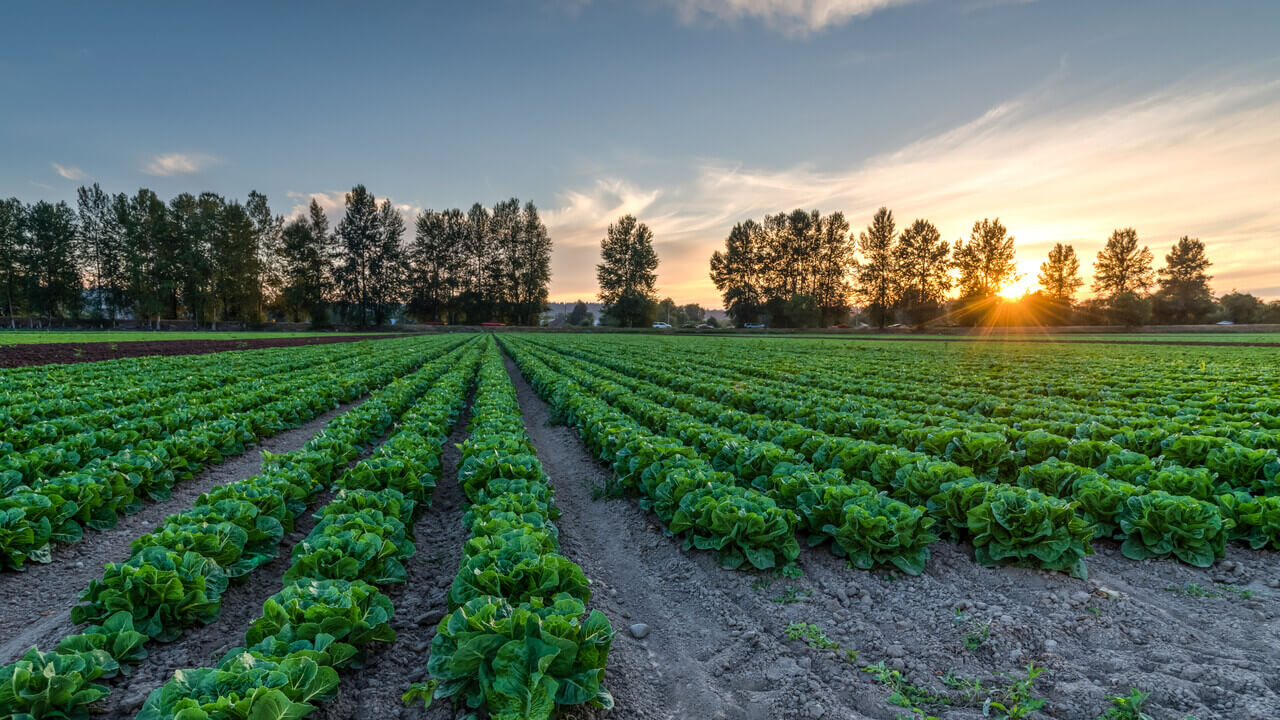The 5 Largest Organic Farms in the United States: An Overview of Organic Food Production
By United Country Real EstateMarch 04, 2024

Discover the top U.S. organic farms, their innovative practice and contributions to the booming organic food industry.
The 5
Largest Organic Farms in the United States: An Overview of Organic Food
Production
The organic food industry is the
fastest-growing food sector. In 2021 alone, U.S. organic farms and ranches sold
upwards of $11 billion in products, and that number is only growing. It used to be that
shoppers would have to seek out a natural grocer or some form of specialty
store to get these products. Now, conventional grocery retailers have overtaken
natural food stores by selling close to 56% of all organic produce.
Why does this matter? The
increase in naturally made food without preservatives, pesticides, or chemicals
has reshaped how our country farms. It is way more common to find a new or
growing organic farm than a traditional monocropping entity unless they are
focusing on wheat or corn.
With that in mind, let’s take
a quick look at those giant organic farms producing the majority of products we
bring to our family table.
What
Makes a Farm Organic?
According to the U.S. Environmental Protection Agency (US EPA), to be named an “organic farm,” all the
food must be grown and processed without synthetic fertilizers or pesticides.
If a pesticide is 100% derived from natural sources (biological pesticides),
then it is okay.
Most organic farmers don’t
rely on pesticides at all. They opt for natural processes found when using
biodiverse systems. This means they may have developed a way of introducing
bugs, animals, or complementary crops to manage any concerns of pests. This is
through the use of a natural ecosystem for growing.
Most importantly, GMOs
(genetically modified organisms) are not allowed on organic farms. There is
some gray area here because some produce found today is so long gone from the
original DNA that it is permitted.
The point is, when you happen
to come across any of the largest organic farms in the United States, you’re
bound to find highly nutritious food grown in a safe, chemical-free
environment. Now, let’s get into our list!
The 5
Biggest Organic Farms
#1 – Cal-Organic
Farms
Of course, we have to begin
our list of the largest U.S. organic farms in California. Founded back in 1984
(the same year they were certified organic), Cal-Organic Farms produces over 65
seasonal and year-round vegetables. Every year, they add more acreage of
organic farmland to their already impressive 40,000 acres of certified organic
California territory. They are located deep in the San Joaquin Valley.
#2 – Shriver Farms
Situated among the many farms
of Iowa, Shriver Farms takes a unique approach to avoiding weed buildup.
Instead of using pesticides or chemicals, they attach “burners” to their
Caterpillar tractors. That scorches the over 2,000 acres of chemical-free crops
so any of the weeds or bugs are eliminated before starting another round of
growing. Since 1867, this family farm has used a diverse farm rotation to
produce over 40 different fruits and vegetables.
#3 – McEnroe Farms
New York is not going to be
left out of our list. In the Upstate area, you’ll find a 1,000-acre-strong
organic farm producing a harvest of vegetables and meats and offering
educational programming to surrounding farmers and schools. Originally started
as a dairy farm, the owner wanted a way out of crippling debt. That led to
cattle, stock, and eventually, the power of organic foods in today’s market.
#4 – South
Tex Organics
Even though South Tex
Organics was founded in 1984, it converted to organic later on after a study by
John Goolsby of Texas A&M University demonstrated the profits and
sustainability benefits. Since then, the 500 organic acres of farmland have
been dedicated to growing citrus. That includes Texas Rio Star grapefruit,
oranges, Meyer lemons, and red/yellow onions. The owner was even named to the
National Organic Standards Board (NOSB) for his work in organic farming.
#5 – Harlow
Farm
Vermont has always been on
the forefront of fresh and chemical-free produce. There is simply something in
the water up there, and it shows with the over 150-acre Harlow Farm. Since
1917, Harlow has remained one of the oldest and largest organic farms in the
United States. This is a multi-generational area with vegetables, chickens, and
other crops, as well as a picturesque farm stand that draws in thousands of
tourists every year.
Honorable Mention: MA’O Farms
Even though MA’O Organic
Farms only operates roughly 40 acres, they are located in Hawaii. If you’ve
ever been to the islands, you’ll know even an acre of land feels like a palace
with so much demand for housing and space. This is a rare gem spearheading the
Transition to Organic Partnership Program (TOPP) from the USDA.
They grow over 40 different
forms of fruits and vegetables and are co-managed by a youth and local
community internship program that allows them to give back. This is a welcome
organization and an organic farm that focuses on tradition more than mass production.
Demand for organic food is
only going to get stronger. You don’t have to visit Sprouts or Trader Joe’s to
get organic food. Stopping in at your local Hannaford, Safeway, Shaw’s, or even
Piggly Wiggly will result in organic sections full of delicious fruits and
vegetables.
The United States is bound to
see more growth in the organic farms sector. More and more family-operated
farms will transition with the full backing of the USDA. The largest organic
food companies will pressure their networks of farms to do the same. This could
be the transformation our country needs for a safer, more nutritious, and
sustainable future in organic foods.
